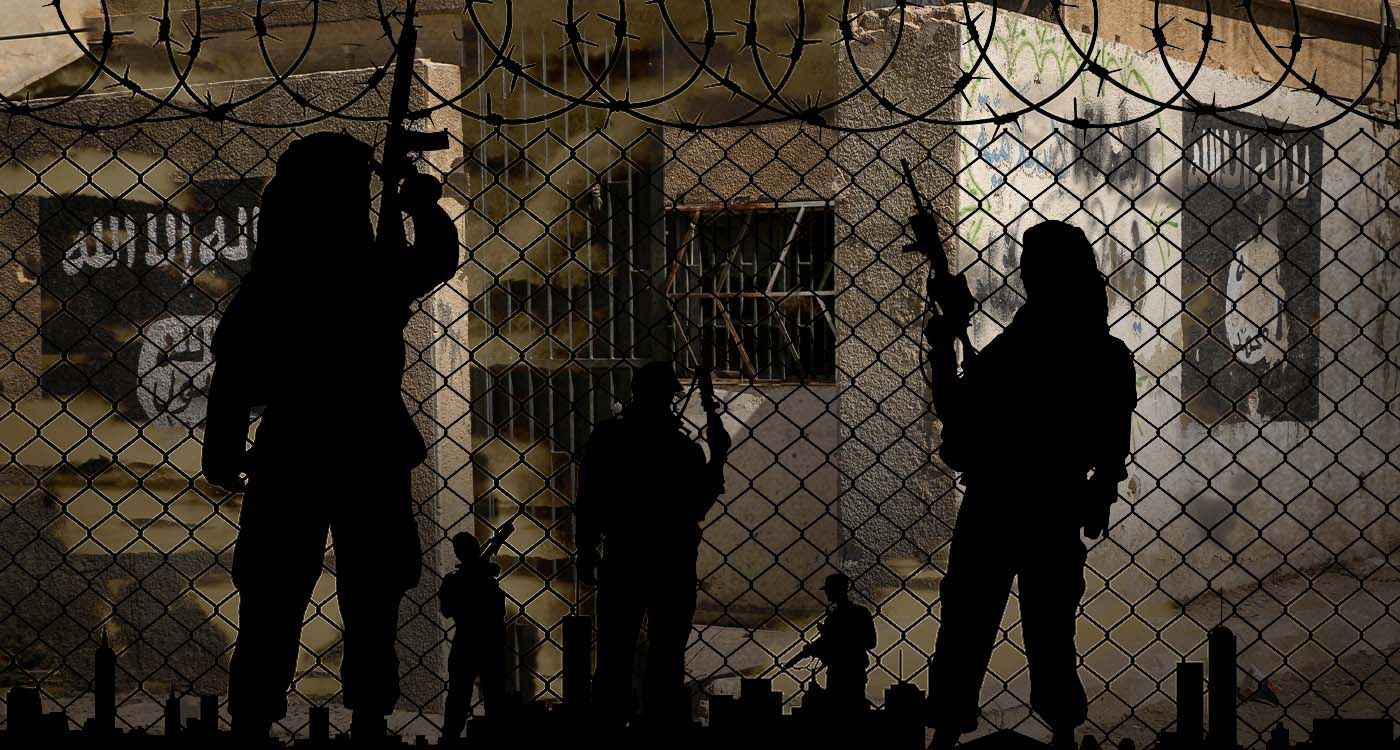
The Lebanese Army announced on Tuesday the arrest of a man identified as R.F., also known as “Qassoura,” who is believed to be the leader of the Islamic State (ISIS) in Lebanon. The operation, conducted by the Directorate of Intelligence, led to the confiscation of a large cache of weapons, ammunition, electronic devices, and materials used for manufacturing drones, the army said in a statement.
Qassoura reportedly took over ISIS leadership in Lebanon after the arrest of his predecessor, Abou Saïd Al-Shami, in December 2024. He is suspected of orchestrating multiple attacks across the country, the statement added.
بعد سلسلة عمليات رصد ومتابعة أمنية، أوقفت مديرية المخابرات المواطن (ر.ف.)، الملقب بـ"قسورة"، وهو أحد أبرز قياديي تنظيم داعش الإرهابي، كما شارك في التخطيط لعمليات أمنية. ضبطت في حوزته كمية كبيرة من الأسلحة والذخائر الحربية، بالإضافة إلى أجهزة إلكترونية ومعدات لتصنيع الطائرات… pic.twitter.com/h7SrNQZdnY
— الجيش اللبناني (@LebarmyOfficial) June 24, 2025
This arrest comes just two days after a deadly suicide bombing at the Saint Elie Church in Syria, which killed 25 people and underscored the ongoing threat posed by ISIS, though it has been significantly weakened.
From Nahr el-Bared to ISIS’s Emergence
Armed Islamist militancy in Lebanon traces back to the 1980s with the rise of Hezbollah, Iran’s military proxy in the country. In 1983, Hezbollah orchestrated several deadly attacks, including the bombing of the US Embassy in Beirut that claimed 63 lives, among them senior CIA officials. Later that year, the group also targeted US Marines and French paratroopers, killing 241 and 58 soldiers respectively.
Sunni jihadism gained momentum in the 1990s and 2000s amid regional instability, with groups like Osbat Al-Ansar and Osbat Al-Nour emerging as early examples.
A key moment came in 2007 during the battle of Nahr el-Bared, a Palestinian refugee camp near Tripoli. The Lebanese Army fought Fateh al-Islam, an al-Qaeda-linked group founded in 2006, in a siege lasting nearly four months. The conflict claimed hundreds of lives—including 168 soldiers—and 226 Islamists, while leaving the camp largely destroyed. About twenty militants managed to escape.
At the time, it was the most serious conflict since the Lebanese civil war and highlighted the ability of jihadist groups to establish themselves in vulnerable areas. Although ISIS was militarily defeated in 2017, it has maintained a residual presence by exploiting ongoing regional turmoil and persistent security gaps.
From the Bekaa Valley to Palestinian Camps
Since 2014, ISIS has established footholds along Lebanon’s border with Syria, especially near Arsal and Ras Baalbeck, capitalizing on the spillover from the Syrian conflict.
In August 2014, clashes between the Lebanese Army and hundreds of ISIS and al-Nusra Front fighters in Arsal left dozens dead.
Research by Israel’s Institute for National Security Studies (INSS) indicates that ISIS and affiliated groups—such as the Abdallah Azzam Brigades, Jund Al-Sham, and Osbat Al-Ansar—have operated in vulnerable northern regions like Tripoli and Akkar, as well as in the Ain al-Hilweh Palestinian camp in southern Lebanon, often coordinating with radical Palestinian factions.
Exploiting Marginalization
According to the Carnegie Endowment, ISIS has sought to portray itself as the protector of Sunni communities against the Lebanese Army and Hezbollah, spreading this narrative through sermons and propaganda after the battle of Arsal.
The Washington Institute suggests that Sunni support for ISIS in Lebanon is less about ideology and more rooted in grievances over neglect, a desire for protection, and state absence.
This dynamic is reflected in local reactions, where some figures implicitly back ISIS as a response to perceived targeted repression. Sheikh Ahmad Al-Assir, a Sidon cleric arrested in 2015 and seen as a potential ISIS representative, exemplified this militant opposition to Hezbollah and the Lebanese Army.
Funding and International Countermeasures
ISIS operates without formal institutional support, relying instead on criminal networks such as arms trafficking, extortion, kidnappings for ransom, private donations, and cross-border logistics.
A US Treasury report from November 2024 estimates ISIS’s core reserves at around $10 million, generated through extortion, theft, and global fundraising. Much of this activity occurs off the formal economic radar, complicating efforts to track funding.
ISIS has also expanded its use of cryptocurrencies to evade detection, raise money from international sympathizers, and finance attacks abroad. While the scale in Lebanon is smaller, the same funding mechanisms are used locally.
US Assistance
The US Department of State’s 2022 Country Reports on Terrorism noted that the United States provided over $6 million in security assistance to Lebanon that year, primarily through the Anti-terrorism Assistance (ATA) program. This support aims to enhance the Lebanese Army and Internal Security Forces’ (ISF) capabilities to combat threats such as improvised explosive devices (IEDs), protect critical institutions, respond to terrorist attacks, and conduct cybersecurity investigations.
These efforts contributed to thwarting a planned ISIS attack in a Palestinian camp in February 2022.
Between July and October 2022, the ISF arrested 30 ISIS-affiliated suspects, including Lebanese, Syrians, Palestinians, and one Egyptian, who were allegedly plotting attacks on military and civilian targets, as well as religious gatherings.
Additionally, a US, UK, and Canadian-funded border security project along Lebanon’s frontier with Syria has enabled the Lebanese Army to enhance its surveillance, interception capabilities, and physical infrastructure.
These US-supported units have been vital in intercepting foreign fighters returning from Syria and preventing their establishment in Lebanon. This serves as a reminder that the Lebanese Army, which enjoys significant Western backing, is more than capable of safeguarding the country’s sovereignty — sending a clear message to ISIS militants.





Comments